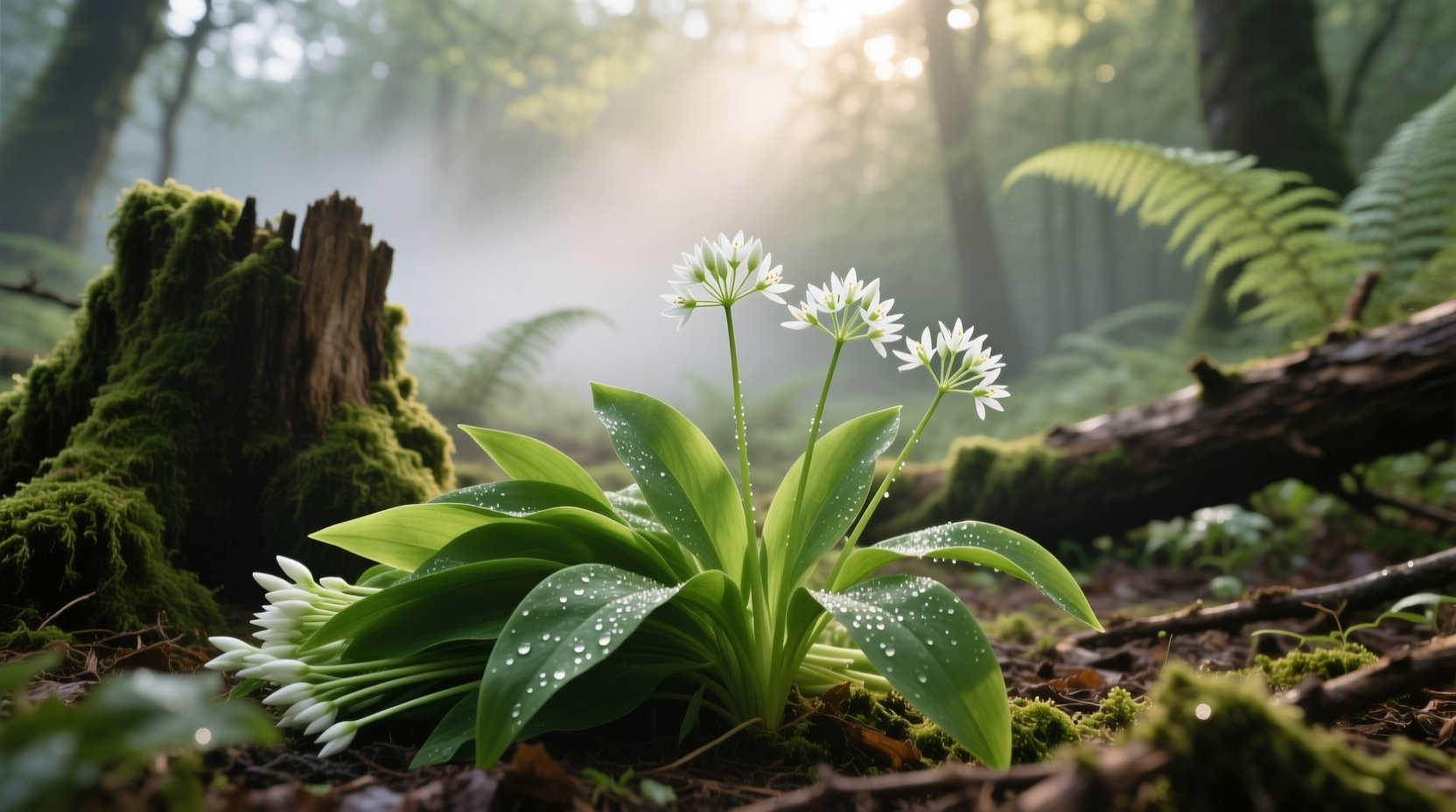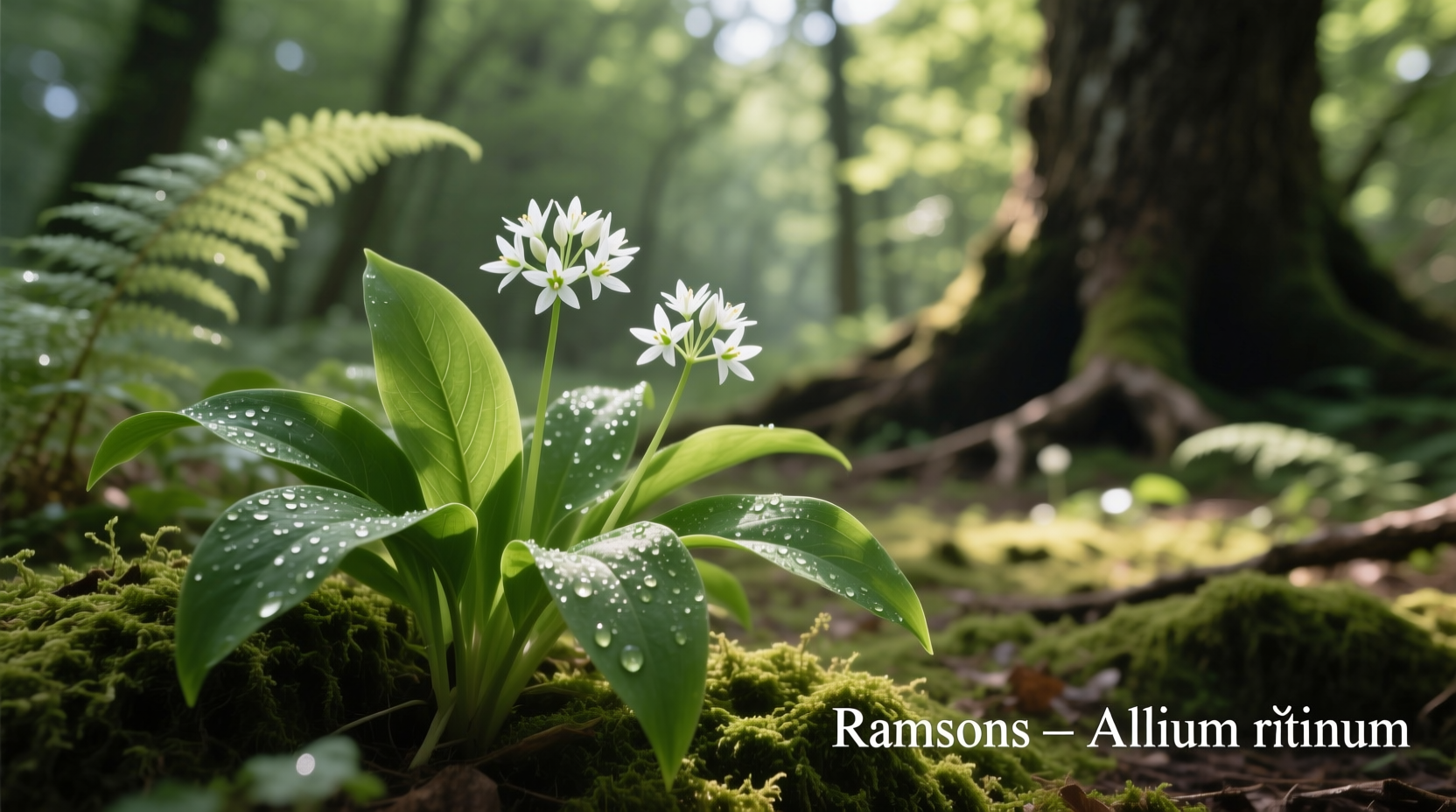Why Ramsons Deserve a Spot in Your Foraging Basket
Each spring, forests across Europe transform into natural pantries with the emergence of ramsons (Allium ursinum). As a French culinary specialist with expertise in European foraging traditions, I've spent years studying this versatile plant that has graced European tables since medieval times. Unlike cultivated garlic, ramsons offer a delicate, nuanced flavor that enhances dishes without overpowering them. But beyond taste, understanding proper identification and sustainable harvesting practices ensures you enjoy this seasonal treasure safely and responsibly.
Spotting True Ramsons: Your Visual Identification Guide
Correct identification is non-negotiable when foraging wild garlic. Mistaking toxic look-alikes could have serious consequences. Ramsons have distinctive characteristics that set them apart:
| Plant | Key Identification Features | Safety Status |
|---|---|---|
| Ramsons (Wild Garlic) | Broad, smooth leaves with parallel veins; white star-shaped flowers in umbels; strong garlic scent when crushed | Edible |
| Lily of the Valley | Two leaves per stem; bell-shaped white flowers; no garlic scent | Poisonous |
| Autumn Crocus | Narrower leaves; purple flowers (blooms in fall); no garlic scent | Poisonous |
| Wild Arum | Leaves with distinctive arrowhead shape; no garlic scent | Poisonous |
The Plantlife Conservation Trust emphasizes that the garlic scent test is your most reliable field identification method. Crush a small portion of the leaf between your fingers—true ramsons will emit a clear garlic aroma within seconds. Never consume any plant without positive identification.
Seasonal Timeline: When and Where to Find Ramsons
Understanding ramsons' growth cycle ensures you harvest at peak flavor while supporting sustainable foraging practices. The Royal Horticultural Society documents this clear seasonal progression:
- February-March: First leaves emerge in damp, shaded woodlands
- April: Peak leaf growth; ideal time for harvesting leaves
- May: Flowering period begins; bulbs reach optimal size
- June: Seed pods form; flavor begins to diminish
- July onward: Plant dies back; leaves yellow and wither
Ramsons thrive in ancient deciduous woodlands with moist, nutrient-rich soil across Europe from the British Isles to Russia. The Journal of Ecology notes they're particularly abundant in areas with bluebells, indicating undisturbed forest ecosystems. Avoid harvesting near roadsides or potentially contaminated areas.

Sustainable Foraging Practices You Must Follow
Responsible foraging preserves this resource for future generations. The UK's Natural England guidelines specify critical practices:
- Take no more than 10-15% of any single patch
- Never dig up entire plants—harvest only 1-2 leaves per plant
- Avoid protected areas like Sites of Special Scientific Interest
- Never harvest where plant populations appear sparse
- Use scissors rather than uprooting to minimize damage
Remember that ramsons spread slowly through seed dispersal. Overharvesting can eliminate local populations for decades. I've witnessed patches in French forests take over 15 years to recover from irresponsible foraging.
Culinary Applications: Transforming Wild Garlic into Gourmet Dishes
Each part of the ramsons plant offers unique culinary possibilities when harvested at the right time:
Leaves (April-May)
The most versatile component, perfect for:
- Wild garlic pesto (substitute basil with equal parts ramsons leaves)
- Infused oils (steep leaves in olive oil for 3-5 days)
- Compound butter (blend softened butter with finely chopped leaves)
Flowers (May)
Delicate and mildly pungent, ideal for:
- Salad garnishes
- Vinegar infusions
- Crystallized decorations for desserts
Bulbs (May-June)
Smaller than cultivated garlic but equally flavorful:
- Pickled bulbs (use 1:1 vinegar to water ratio with spices)
- Roasted whole in olive oil
- Preserved in salt for winter use
Preservation Techniques for Year-Round Enjoyment
Since ramsons have such a brief season, proper preservation extends their culinary life:
- Freezing: Blanch leaves for 30 seconds, then freeze in ice cube trays with olive oil
- Drying: Hang small bunches upside down in a dark, well-ventilated space (loses some flavor)
- Pesto: Mix with olive oil and freeze in portions (add lemon juice to preserve color)
- Vinegar infusions: Steep flowers in white wine vinegar for 2-3 weeks
The US National Library of Medicine confirms that freezing preserves 85-90% of wild garlic's beneficial compounds compared to fresh, making it the most nutritionally sound preservation method.
Nutritional Profile: More Than Just Flavor
Ramsons offer impressive health benefits backed by scientific research. According to USDA nutritional analysis per 100g of fresh leaves:
- Vitamin C: 110mg (183% of daily value)
- Vitamin A: 2,500 IU (50% of daily value)
- Calcium: 120mg (12% of daily value)
- Iron: 2.5mg (14% of daily value)
- Allicin content: Comparable to cultivated garlic
Studies published in the Journal of Food Composition and Analysis show wild garlic contains higher concentrations of certain antioxidants than cultivated varieties, particularly quercetin and kaempferol, which support cardiovascular health.
Critical Safety Considerations You Must Know
While ramsons are safe when properly identified and consumed in moderation, important limitations exist:
- Never consume if you have a known garlic allergy
- Limit intake if taking blood thinners (contains vitamin K)
- Avoid excessive consumption if pregnant or breastfeeding
- People with IBS may experience digestive discomfort
- Never eat bulbs that appear moldy or have unusual discoloration
The European Food Safety Authority notes that while wild garlic is generally safe, overconsumption (more than 50g daily for adults) may cause gastrointestinal distress. As with any wild food, introduce it gradually to assess your tolerance.
Three Classic Ramsons Recipes to Try This Season
Wild Garlic & Potato Soup (Serves 4)
Ingredients: 200g wild garlic leaves, 500g potatoes, 1L vegetable stock, 100ml cream, 1 onion, 2 tbsp olive oil
Method: Sauté chopped onion in olive oil until translucent. Add diced potatoes and stock, simmer until tender. Remove from heat, stir in wild garlic leaves until wilted. Blend until smooth, return to low heat, and stir in cream. Season with salt and white pepper.
Ramsons Pesto (Makes 250ml)
Ingredients: 100g wild garlic leaves, 50g pine nuts, 50g Parmesan, 150ml olive oil, 1 garlic clove, juice of 1/2 lemon
Method: Pulse garlic and pine nuts in food processor. Add wild garlic leaves and Parmesan, process while slowly adding olive oil. Finish with lemon juice. Store with thin layer of oil on top.
Wild Garlic Butter (Makes 200g)
Ingredients: 200g unsalted butter, 50g finely chopped wild garlic leaves, zest of 1 lemon, 1 tsp sea salt
Method: Soften butter to room temperature. Mix with other ingredients until uniform. Roll into log using parchment paper, chill until firm.











 浙公网安备
33010002000092号
浙公网安备
33010002000092号 浙B2-20120091-4
浙B2-20120091-4